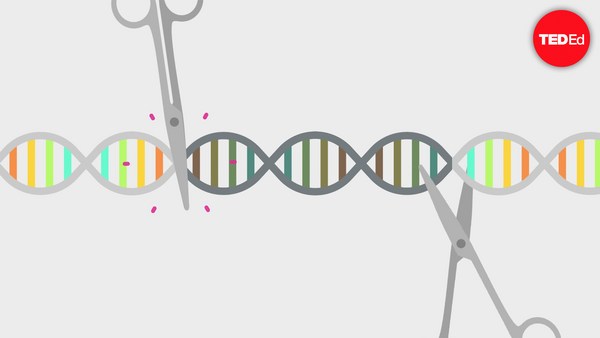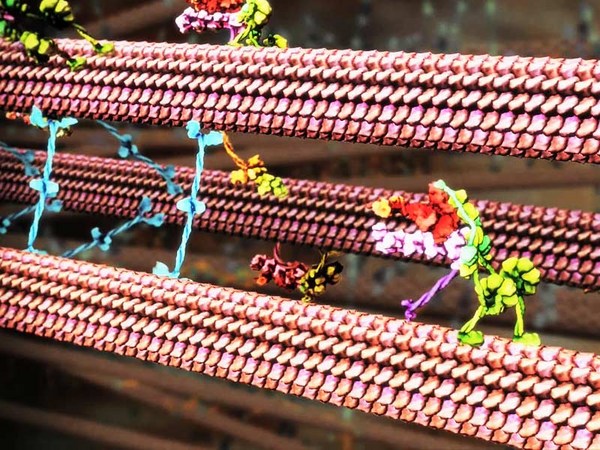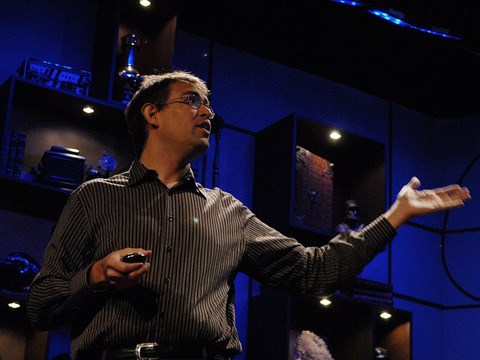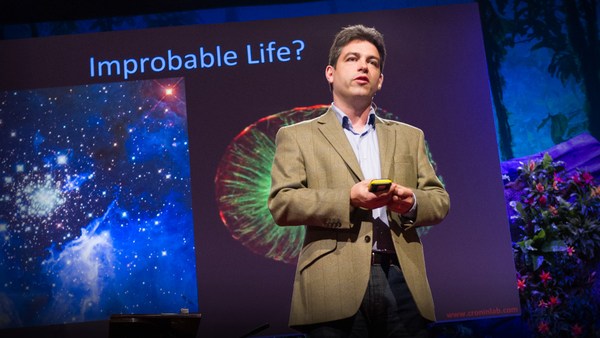I live in Utah, a place known for having some of the most awe-inspiring natural landscapes on this planet. It's easy to be overwhelmed by these amazing views, and to be really fascinated by these sometimes alien-looking formations. As a scientist, I love observing the natural world. But as a cell biologist, I'm much more interested in understanding the natural world at a much, much smaller scale.
I'm a molecular animator, and I work with other researchers to create visualizations of molecules that are so small, they're essentially invisible. These molecules are smaller than the wavelength of light, which means that we can never see them directly, even with the best light microscopes. So how do I create visualizations of things that are so small we can't see them?
Scientists, like my collaborators, can spend their entire professional careers working to understand one molecular process. To do this, they carry out a series of experiments that each can tell us a small piece of the puzzle. One kind of experiment can tell us about the protein shape, while another can tell us about what other proteins it might interact with, and another can tell us about where it can be found in a cell. And all of these bits of information can be used to come up with a hypothesis, a story, essentially, of how a molecule might work.
My job is to take these ideas and turn them into an animation. This can be tricky, because it turns out that molecules can do some pretty crazy things. But these animations can be incredibly useful for researchers to communicate their ideas of how these molecules work. They can also allow us to see the molecular world through their eyes.
I'd like to show you some animations, a brief tour of what I consider to be some of the natural wonders of the molecular world. First off, this is an immune cell. These kinds of cells need to go crawling around in our bodies in order to find invaders like pathogenic bacteria. This movement is powered by one of my favorite proteins called actin, which is part of what's known as the cytoskeleton. Unlike our skeletons, actin filaments are constantly being built and taken apart. The actin cytoskeleton plays incredibly important roles in our cells. They allow them to change shape, to move around, to adhere to surfaces and also to gobble up bacteria.
Actin is also involved in a different kind of movement. In our muscle cells, actin structures form these regular filaments that look kind of like fabric. When our muscles contract, these filaments are pulled together and they go back to their original position when our muscles relax.
Other parts of the cytoskeleton, in this case microtubules, are responsible for long-range transportation. They can be thought of as basically cellular highways that are used to move things from one side of the cell to the other. Unlike our roads, microtubules grow and shrink, appearing when they're needed and disappearing when their job is done.
The molecular version of semitrucks are proteins aptly named motor proteins, that can walk along microtubules, dragging sometimes huge cargoes, like organelles, behind them. This particular motor protein is known as dynein, and its known to be able to work together in groups that almost look, at least to me, like a chariot of horses.
As you see, the cell is this incredibly changing, dynamic place, where things are constantly being built and disassembled. But some of these structures are harder to take apart than others, though. And special forces need to be brought in in order to make sure that structures are taken apart in a timely manner. That job is done in part by proteins like these. These donut-shaped proteins, of which there are many types in the cell, all seem to act to rip apart structures by basically pulling individual proteins through a central hole. When these kinds of proteins don't work properly, the types of proteins that are supposed to get taken apart can sometimes stick together and aggregate and that can give rise to terrible diseases, such as Alzheimer's.
And now let's take a look at the nucleus, which houses our genome in the form of DNA. In all of our cells, our DNA is cared for and maintained by a diverse set of proteins. DNA is wound around proteins called histones, which enable cells to pack large amounts of DNA into our nucleus. These machines are called chromatin remodelers, and the way they work is that they basically scoot the DNA around these histones and they allow new pieces of DNA to become exposed. This DNA can then be recognized by other machinery. In this case, this large molecular machine is looking for a segment of DNA that tells it it's at the beginning of a gene. Once it finds a segment, it basically undergoes a series of shape changes which enables it to bring in other machinery that in turn allows a gene to get turned on or transcribed. This has to be a very tightly regulated process, because turning on the wrong gene at the wrong time can have disastrous consequences.
Scientists are now able to use protein machines to edit genomes. I'm sure all of you have heard of CRISPR. CRISPR takes advantage of a protein known as Cas9, which can be engineered to recognize and cut a very specific sequence of DNA. In this example, two Cas9 proteins are being used to excise a problematic piece of DNA. For example, a part of a gene that may give rise to a disease. Cellular machinery is then used to basically glue two ends of the DNA back together.
As a molecular animator, one of my biggest challenges is visualizing uncertainty. All of the animations I've shown to you represent hypotheses, how my collaborators think a process works, based on the best information that they have. But for a lot of molecular processes, we're still really at the early stages of understanding things, and there's a lot to learn. The truth is that these invisible molecular worlds are vast and largely unexplored. To me, these molecular landscapes are just as exciting to explore as a natural world that's visible all around us.
Thank you.
(Applause)





